Main content starts here.
Mascots of Yokohama
Last updated date:2018/10/2
The Mascots of Yokohama
Today, I will introduce Yokohama city’s mascot characters.
Mascots are a big deal in Japan. Practically every company, sports team and place has its mascot. And by place, I don’t just mean amusement parks, museums and such, but local governments as well! And at every level at that: prefectures, cities, wards, and even sometimes public service departments!!
Yokohama is such a city.
I’ll make this article about introducing the mascots of the different wards.
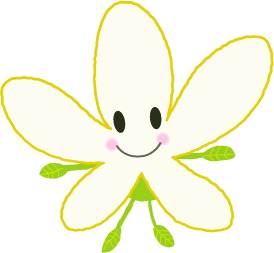
Aoba Ward: Nashika-chan
Nashika-chan was created to heighten the closeness citizens feel toward Aoba Ward and to reaffirm its history, appeal and distinctness. The design was chosen among 1777 submissions by children no older than elementary school students.
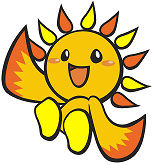
Asahi Ward: Asahi-kun
Energetic as the bright sun, Asahi-kun was created to revitalize the citizens interest in their ward. Asahi-kun can fly and lives to make citizens smile. His bright yellow and orange body represents the vigor and high-spirit of Asahi Ward. He has wings for arms allowing him to fly toward a future full of hopes.
Hodogaya Ward: Karugamo Squad
The Karugamo Squad was created to introduce the ward to kids. The spot-billed duck (karugamo in Japanese) also happens to be the ward’s emblematic bird. The squad is made up of 4 members, each with its own message:
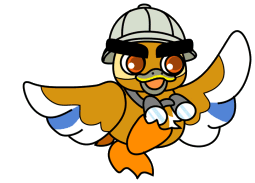
Squad Leader Karugamo
Karugamo wants children to enjoy playing outdoors even when it’s cold outside as it is good for one’s health. But it is also important to wash one’s hands when coming back from playing.
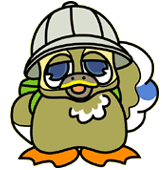
Hodonii
There’s nothing like eating together with one’s family while sitting at the kotatsu (Japanese heated table). And filling up on rice cake is a delight!
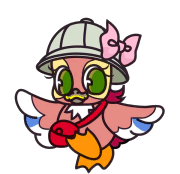
Lulu
Not only does she want children to have fun every day, but it is important to bond with others and make friends. Don’t forget to help around the house, though!
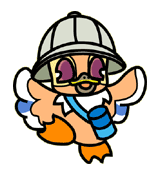
Gacchan
Children must stay healthy through the cold weather. Whether by running around or flying a kite, exercise is important and keeps one’s body warm. Let’s all do it together!
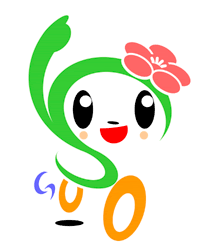
Isogo Ward: Isoppy
Chosen among 239 entries in a design contest to create a mascot for Isogo ward’s festival, its body is made up of the letters I, S, O, G, and O. Isoppy’s name is a contraction of the words “Isogo” and “happy”. She wants to bring happiness and smiles to the citizens of Isogo ward, a ward where nature and city exist in harmony.
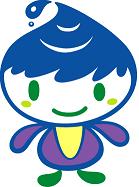
Izumi Ward: Izzun
Izzun is the result of a contest in which this design was chosen among 141 entries by getting 2,164 votes. Izzun came from the shore of Izumi Ward. It was attracted to the cheerful voices of children playing and the sound of music, and decided to make this green and lively city its home. Izzun head represents water; its face and feet, greenery; its body, iris; all elements important to Izumi Ward. (The iris is the ward’s emblematic flower.)
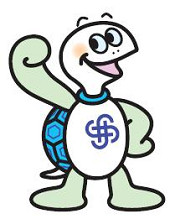
Kanagawa Ward: Kametaro
One of the variations of the story of Urashima Taro taking place in Kanagawa, the ward has made the turtle from the legend its mascot. Even its name is a pun on the word “kame” (“turtle” in Japanese) and Taro’s name. Kametaro enjoys coming in contact with the ward’s citizens and often participates in the ward’s festivities.
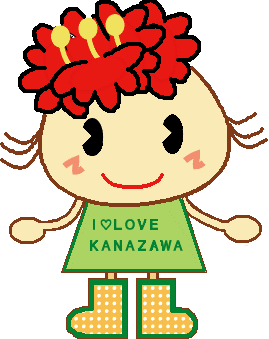
Kanazawa Ward: Botan-chan
This mascot represents a peony, which is the ward’s emblematic flower, hence her name “Botan” which means “peony” in Japanese. Her role is to introduce the citizens to different information concerning the ward, such as the highlight events and places.
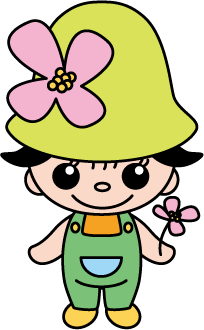
Kohoku Ward: Mizukii
Mizukii was born from a flowering dogwood tree (“hanamizuki” in Japanese) in Kohoku Ward. She’s forgetful and likes to do things at her own pace. The flower in her hand is a magic wand and she can float in the sky by riding the wind. She likes to walk around the ward and talk about her discoveries and favorite places in Kohoku Ward.
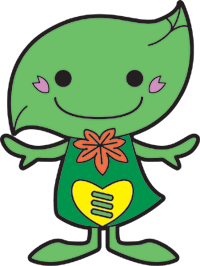
Midori Ward: Midorin
The design for Mirodin was chosen among 130 other entries, and her name was subject to a vote with 106 entries. She was designed as a green leaf with bletilla petals making her purple cheeks and the character for “mi” on the front of her dress. Midorin lives in the forests and woods of Mirodi Ward. Her special talent is photosynthesis! She makes oxygen by sucking out the carbon dioxide in the air in an effort to prevent global warming.
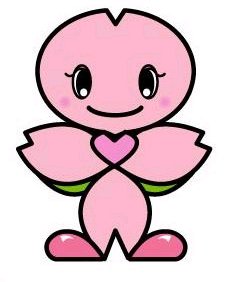
Minami Ward: Minacchi
The design for Minacchi was chosen in a contest in which 62 citizens participated. The age of the contestants ranged from 9 to 85 years old. Moreover, the contest to choose the name of this character exceeded 1000 entries! Minacchi often appears in advertisement, publications and events in Minami Ward to convey her love toward the ward.
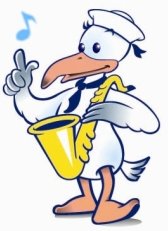
Naka Ward: Swingy
Swingy was born and raised on Osanbashi, making it a seagull interested in the world. Ever since he can remember, he’s been humming jazz songs. He’s become an entertainer with a giving spirit who plays jazz. He likes events as well as impromptu happenings on street corners. Who knows, you might encounter him playing his saxophone on top of Osanbashi. So come and try to find him while enjoying the view.
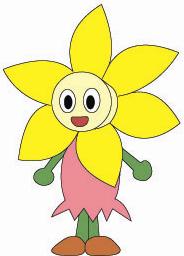
Nishi Ward: Nishimaro-chan
Nishimaro-chan was created in the image of a daffodil. At first, she didn’t have a name, but as citizens kept complimenting on how cute she was and asking for her name, there was a public vote to find her a name. Her name comes from the wish for the smooth (“maroyaka” in Japanese) development of Nishi Ward. She often takes part in events and activities organized in the ward.
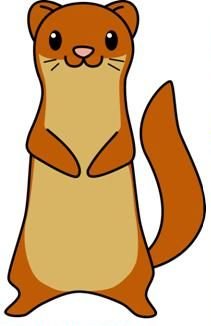
Sakae Ward: Tacchii-kun
Tacchii-kun is mainly a mascot for the Itachi River that passes through Sakae Ward from East to West. As a matter of fact, its name is a pun between the name of the river and the English word “touch” (pronounced “tacchi” in Japanese) to encourage people to go out and come in contact with the life of the river and the rich nature found in the ward. It has now come out of the river bed to participate in the community from playing with children to helping the elderly.
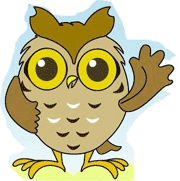
Seya Ward: Seyamaru
Seya Ward’s mascots are scops owls because the shape of the ward looks like the silhouette of this bird as if it were perched on a branch. Their names were chosen by the citizens: Seyamaru is named after the ward and his little sister Konoha is named after the bird (“konohazuku” in Japanese). They actually form a whole family with their parents and grandparents.
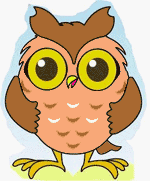
Seya Ward: Konoha
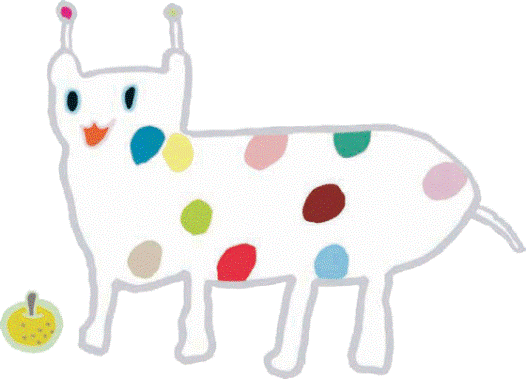
Totsuka Ward: Unashii
I’ll start by stating that Unashii is my favorite ward mascot. I’ll also go ahead and admit it looks less conventional. The design for Unashii—chosen among 595 entries—is pretty clever: every color on the character has been especially chosen and has something to do with the ward. ( http://www.city.yokohama.lg.jp/totsuka/chishin/guide.pdf(PDF:1,091KB))
For example, pink represents cherry blossoms and ham; blue, the rivers, ponds and waterfalls; green, the forests, parks and fields. Its name – chosen among 1,314 entries – is a pun between the Japanese words “ushi” and “nashi”, respectively meaning “cow” and “pear”. Cow because the spotted design is reminiscent of a cow and pear because Totsuka’s pears are famous in the region.
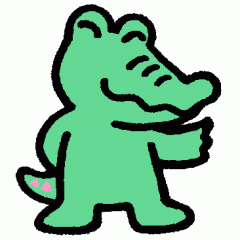
Tsurumi Ward: Wakkun
Wakkun was created for the Tsurumi Festival in 1988, making him one of the older mascots. The theme of the festival was “Symphony of Hills and Rivers” and the organizers wanted a strong animal that could breathe both on land and in water. Add to this the shape of Tsurumi Ward, which kind of looks like a crocodile’s head, and there you have it! Wakkun likes children, which is a good thing since children like Wakkun and gather around him whenever he makes appearances at events. The “wa” in Wakkun’s name is from the Japanese word “wani” meaning “crocodile”. Wakkun is meant to bring awareness and solidarity in the ward.
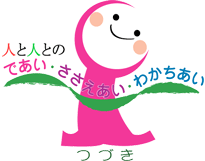
Tsuzuki Ward: Ai
More accurately, this is the mascot of the Tsuzuki Community Health and Welfare Planning Division, but it participates in various campaigns organized by the ward. Ai’s last name is Tsuzuki, like the ward. Put this back in the Japanese order and you get the phrase “tsuzuki ai” which translates to “human relationship” or “kinship”. Moreover, her banner reads “People meeting, supporting each other and sharing with one another,” all expressions that use the Japanese word “ai” which stands for “reciprocity”.
I hope you can appreciate the thoughts and efforts that were put into creating these characters. Actually, I’ll probably write a second article about mascots later, since I couldn’t cover in this one some other memorable Yokohama characters such as Hamapyon, Hamarin, Io and Tanemaru. Look forward to it!
Page ID:263-061-661

